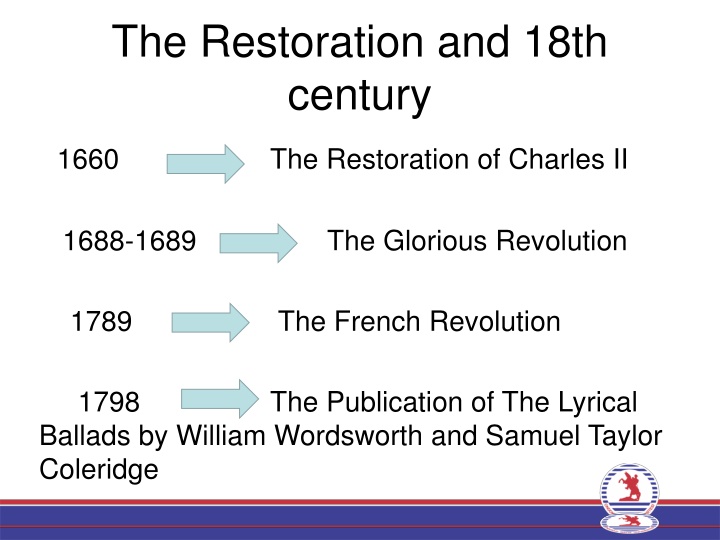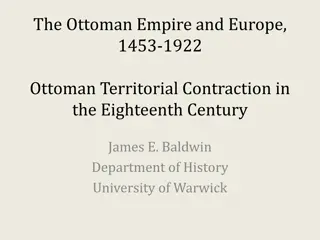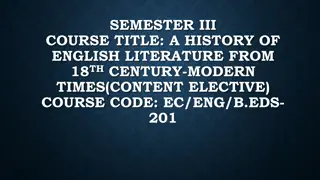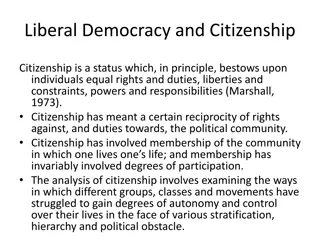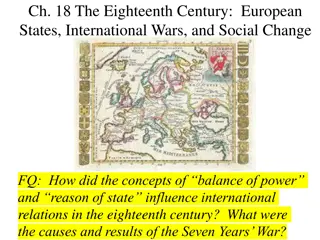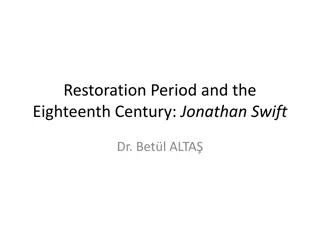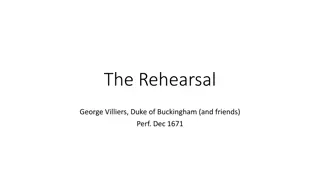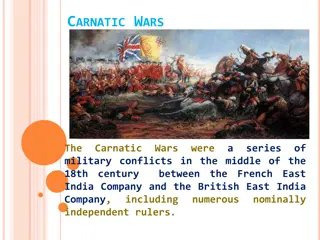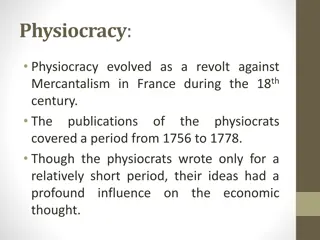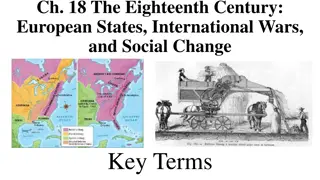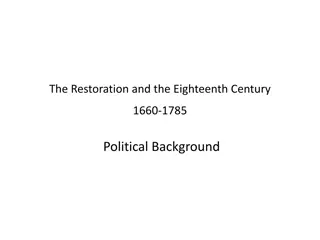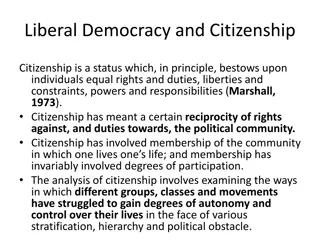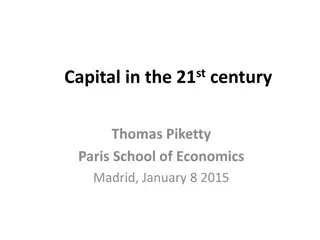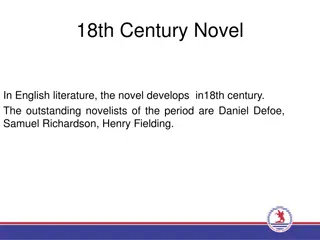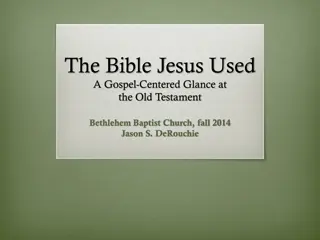The Restoration and 18th Century: Key Events and Political Developments
Following the Restoration of Charles II and the Glorious Revolution, England saw significant political changes with rulers like William of Orange, Mary II, Queen Anne, and the Act of Union uniting Scotland and England. The Colonial Wars expanded British dominions globally, while the emergence of Tory and Whig parties marked a shift in political landscape towards aristocratic and middle-class interests.
Download Presentation

Please find below an Image/Link to download the presentation.
The content on the website is provided AS IS for your information and personal use only. It may not be sold, licensed, or shared on other websites without obtaining consent from the author.If you encounter any issues during the download, it is possible that the publisher has removed the file from their server.
You are allowed to download the files provided on this website for personal or commercial use, subject to the condition that they are used lawfully. All files are the property of their respective owners.
The content on the website is provided AS IS for your information and personal use only. It may not be sold, licensed, or shared on other websites without obtaining consent from the author.
E N D
Presentation Transcript
The Restoration and 18th century 1660 The Restoration of Charles II 1688-1689 The Glorious Revolution 1789 The French Revolution 1798 The Publication of The Lyrical Ballads by William Wordsworth and Samuel Taylor Coleridge
After the death of Cromwell, the parliament invited Charles II back. It is called the restoration age. Charles II was followed by James II. Seven eminent Englishmen (one bishop and six politicians) invited William nephew and son-in-law of James II, to rule England. This is called The Glorious Revolution. of Orange, the
William of Orange and Mary (Mary II) jointly ruled England until the death of Mary in 1694. After the death of Mary II, William of Orange ( also known as William III of England) ruled the country until his death in 1702.
Between 1689 and1763 in a series of wars known as The Colonial Wars against France and Spain, the British acquired dominions that stretched around the World from Canada in the West, to India in the East.
In 1702, Queen Anne came to the throne. When she became queen, England was at war with Spain and France. After the death of Anne, George I came to the throne. He was followed by George II. George III was influential in foreign and home politics. But Restoration, the parliamentary government increased immensely in power. starting from the
In 1707, the Act of Union united Scotland and England under the name of Great Britain. The Act of Toleration gave freedom of worship, belief to all sects.
There were two political parties : Tory and Whig. The Tory party still exists in England. It was a conservative and aristocratic party, the members of which were land owners, the clergy, the aristocrats. They were Anglican. The Whig party was the party of new rising class. Its members were the tradesmen and business men of towns. It was a middle class party. They were either Protestant or Anglican. mostly Catholic or
In the 18th century the following changes occurred: 1-changes in the social values and morals 2- changes in the intellectual atmosphere 3-changes in the national economics
In this period, London was no more associated with the aristocracy. The dominant class became the middle class, which had its own morality and values. The education system changed radically. Journalism developed.
The Literature of the Period The names given to this period are: Age of reason, age of enlightenment, England s Augustan Age
This period witnessed the development of literary theory. John Dryden and Samuel Johnson were the two important literary critics. Johnson compiled the dictionary of the English Language. It was published in 1755. Dictionary of the English Language is among the most influential dictionaries in history.
Satire is the most typical product of this period. In the 18th century, Alexander Pope and Jonathan Swift distinguished satirists. were the most
Satire Satire is a literary manner aiming at showing and criticizing the corruption of an individual or a society through humour and ridicule. The intention of the satirist is correction. The satirist intends to correct the individual or society by mirroring the deviations from the standards or norms. Most common types of satire are Horatian and Juvenalian follies, frailties and
Horatian satire is gentle, smiling, and mild. Juvenalian harsh, angry, even sometimes misanthropic.
